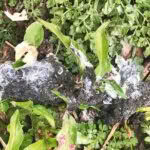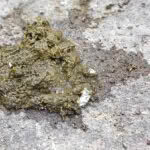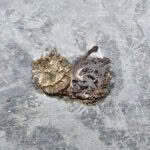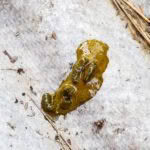What your chickens’ poo is saying about their health
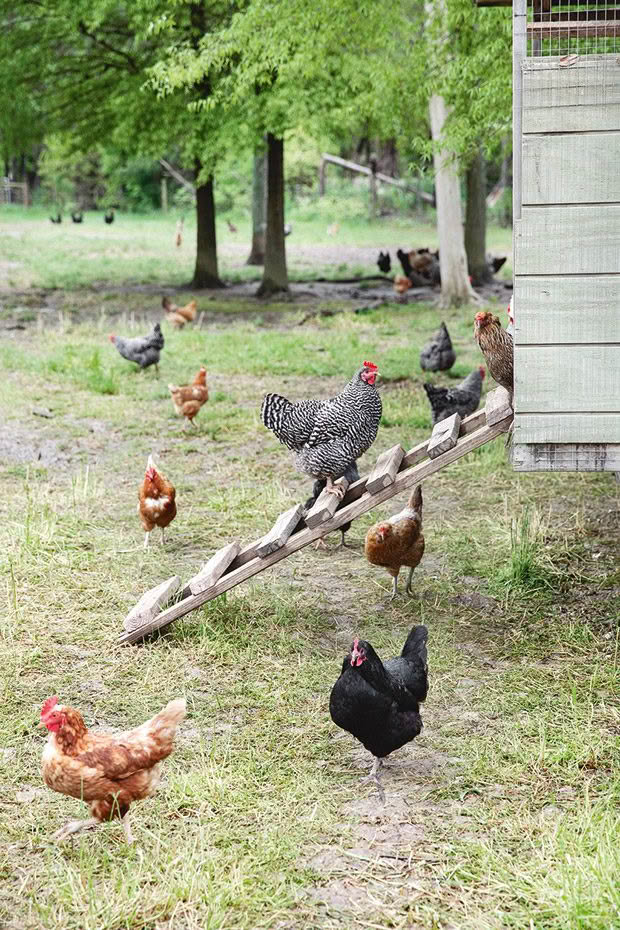
Poo is a useful indicator of flock health, and a possible early warning sign of an illness if you know good poo from bad.
Words: Sue Clarke & Nadene Hall
When a chicken becomes unwell, your first clue may be when it sits apart from the rest of the flock, head sunk into its shoulders, fluffed up and looking depressed. But there were probably earlier signs of a developing problem if you’d had a good look at its poo. It may alert you to an issue before your bird shows the more advanced signs of illness.
With infectious diseases, the earlier the diagnosis, the quicker you can get a sick chicken into quarantine to prevent the spread of infection.
THE EASY WAY TO CHECK POO
Your flock poo regularly, even when they’re sleeping. The simplest way to check what’s going on is by looking under their perches each morning. You can make it easier by placing plain paper or cardboard under the perches at night – don’t use newspaper as it can be difficult to differentiate poo from colours on the paper.

Do this every week or so as a routine health check, then throw the paper or card into the compost bin. If you see anything odd, take a photo, and ask your vet or a trusted poultry expert to check it.
You’ll quickly get to know the look of your flock’s ‘normal’ poo, making it much easier to spot anything abnormal. Always wash your hands thoroughly after handling manure or poultry.
The good poo guide
10-15 digestive droppings per day. There are three parts to every digestive poo, and a separate caecal dropping.
1. Urates
A chalky white coating on faeces, isn’t watery but isn’t solid either. Urates are the crystalline section of the urine.
2. Urine
Clear, watery, like any other animal’s urine. More urine and urates are produced than faeces each day. Sometimes the urine and urates will mix, forming a cloudy liquid. If a bird stops eating because it’s unwell, the urates and urine may be the only ‘faeces’ you’ll see.
3. Faeces
The main solid portion of poo, can be varying shades of green to yellow-brown depending on what the bird is eating. Digested matter is the tubular-shaped section in the middle of the dropping. It may be straight, coiled, or broken up into smaller, tube-shaped pieces.
GOOD POO IDENTIFICATION
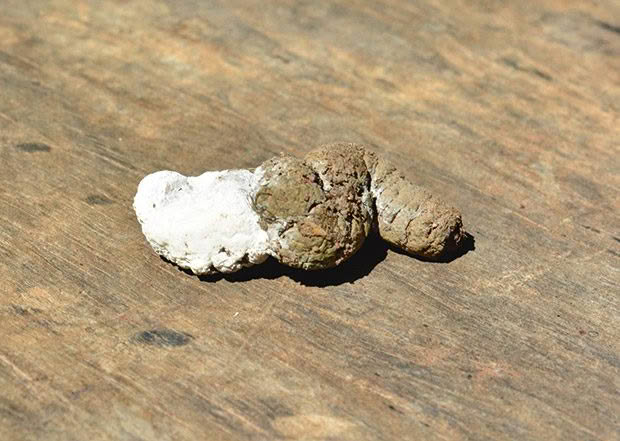
1. Normal, showing the urate crystals coating the outside.
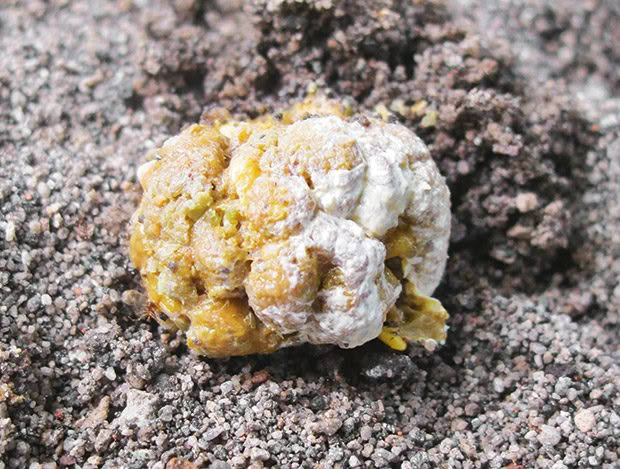
2. Normal, the yellow colour is due to the bird eating a diet of pellets/grains.
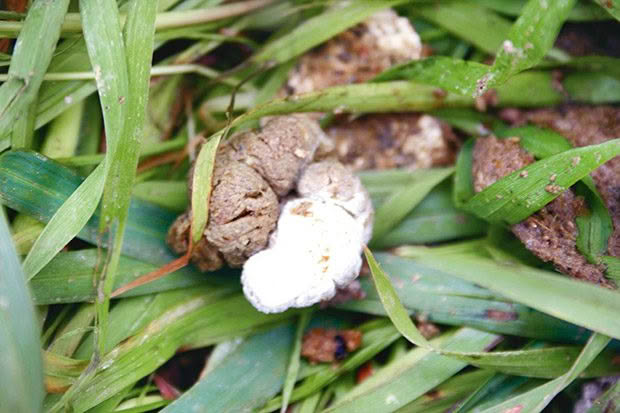
3. Normal.
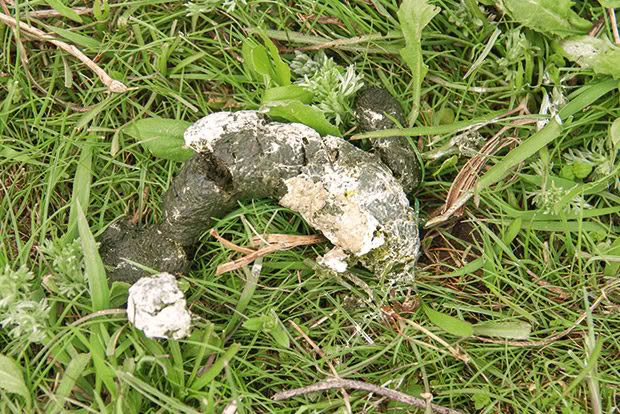
4. Normal, but a much darker green due to the bird’s diet of pasture and other plants.
- 5
- 6
5 & 6. Probably normal. The runny consistency may be due to a hen having a short bout of gastric distress caused by eating something rich or toxic. It’s also possible the temperature is very hot, which means the bird is drinking and urinating a lot more than normal.
You would need to check the individual hen for other symptoms to determine whether it’s a short-term issue or indicating a more serious health problem. If a hen is eating, drinking, and behaving normally, a few loose stools isn’t a concern.
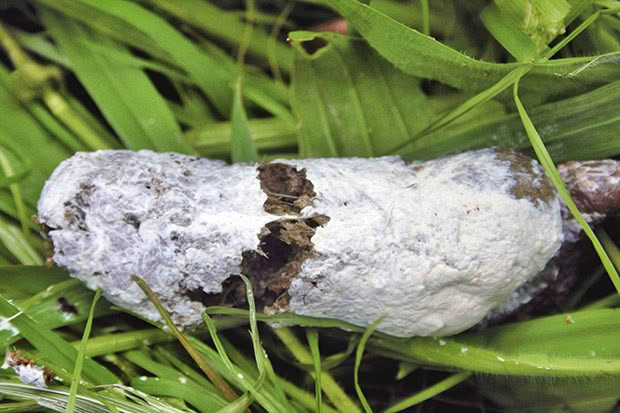
7. Normal. Older birds often produce a lot more urates than young ones, due to long-term build-up in the kidneys and bladder.
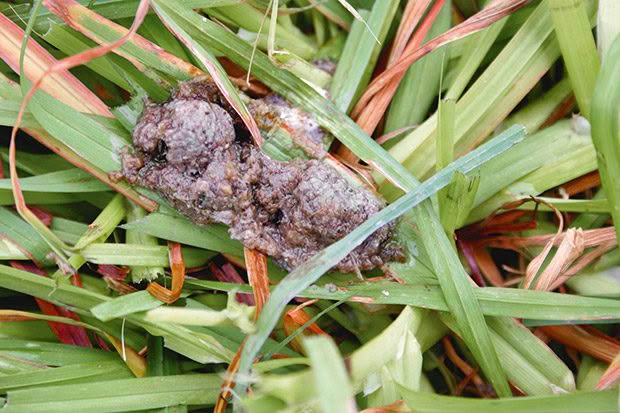
8. Normal.
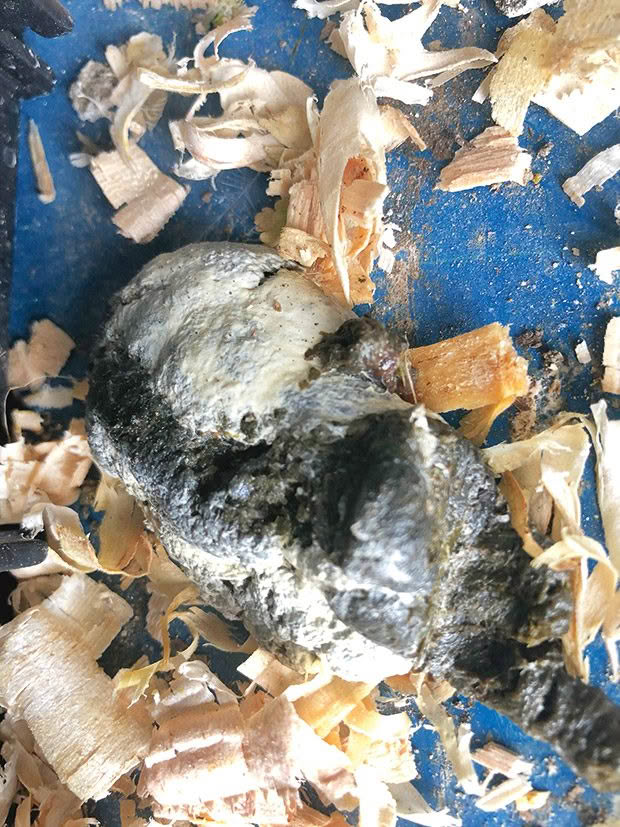
9. Normal. Droppings vary significantly in size, but broody hens can produce deposits three or four times this size. These tend to be incredibly smelly, as the manure builds up inside the hen’s body as she sits, to create a mega-poo.
CAECAL DROPPINGS
1-2 every day. It has a mustard-yellow to caramel-brown to dark-brown. A caecal dropping is very smelly, with a thick, wet consistency, and there’s no urates or digested matter.
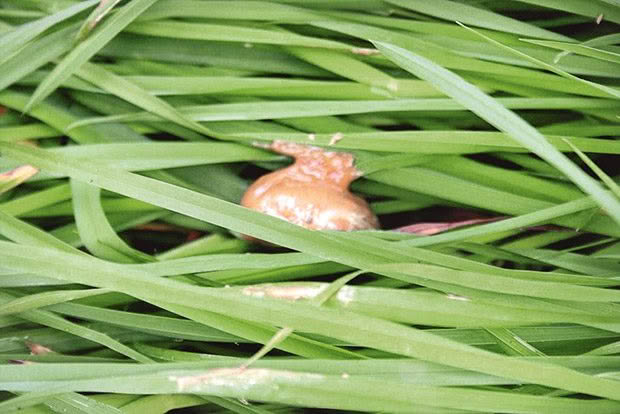
Caecal droppings are completely normal but look quite different from the more common digestive dropping. It’s the evacuated contents of the caecum which birds excrete every 8-10 times they poop.
The caecum is a set of two blind-ending tubes at the junction of the large and small intestines, similar to the human appendix. It plays an important role in fermenting nutrients to produce short-chain fatty acids (SCFAs) which contribute energy to the body.
The colour of foods can change the colour of poo
Green-brown: green vegetation, seeds
Dark blue-black: berries and seeds, especially dark purple ones
Bright blue/teal: red cabbage
Broody hens can be foul
Broody hens can have a build-up of manure inside their bodies due to their lack of movement. When they do leave the nest, droppings are a lot larger than average and are often very smelly.
Blood or membranes
It’s possibly coccidiosis, a gut-living parasite that can be treated with medication (Coxiprol), or enteritis caused by a bacterial infection. Occasionally, a bird will shed a small part of its intestinal lining, which will look red, stringy and jelly-like; this is normal.
Diarrhoea
Faeces will be runny, and the bird may have symptoms of illness. Note the colour, or better yet, take photos so your vet or poultry expert can see it.
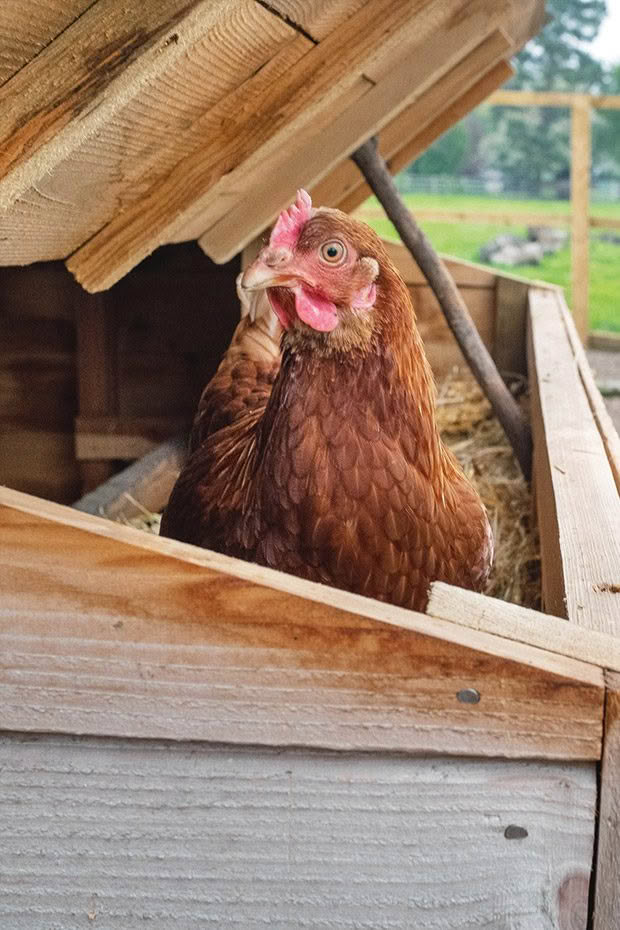
Should the droppings smell?
Fresh droppings from a healthy chicken don’t smell much unless you take a good, close-up sniff. A noticeably bad smell can be a sign of infection in the digestive tract, most commonly due to a bacterial or yeast infection.
Nb: caecal droppings are normally very smelly.
WHAT IS THIS POO TELLING YOU?
Both these droppings below might look suspect, but poultry expert Sue Clarke’s assessment is, they’re normal.
- “The first one (top) has some caecal material mixed in with the ordinary digestive matter.
- “The second also looks like darker caecal material but there may be a touch of bacterial enteritis. It’s hard to say unless you saw the next couple of deposits. It’s probably nothing to worry about unless it continued, and the bird looked sick.”
THE BAD POO GUIDE
A sudden change in poo colour and/or consistency indicates there may be an issue with a bird.
1. Urates
Green: Liver problem or starvation
Yellow: Liver problem or starvation
Brown: Lead poisoning
Red: Internal bleeding (low in the digestive tract) or kidney disease
Increased urates: Dehydration, kidney problem
Watery-white with no solids: kidney problem
2. Urine
Green: Liver problem
Yellow: Liver problem
Red: Internal bleeding (low in the digestive tract), lead poisoning, kidney disease
Increased urine: Drinking a lot (perhaps on a hot day), eating foods high in water (eg lettuce), disease (often bacterial)
3. Faeces
Black or tar-like: Internal bleeding (high in the digestive tract)
Pea-green: Liver damage
White or clay coloured: Pancreas problem, digestive problems
Lumpy or undigested food: incomplete digestion, foods too hard to digest (corn or maize), stunting syndrome
Pale yellow, foamy, bubbly: parasites
WHAT TO DO IF YOUR BIRD’S POO GOES BAD
1. Consult a vet or poultry expert to narrow down the possible causes. It may be that all you need to do is adjust the diet.
2. Encourage a bird to drink by dipping its beak in a dish of clean water. Don’t pry open a bird’s beak and attempt to force water or medication down its throat as it can easily lead to aspiration (fluid entering the lungs) and death.
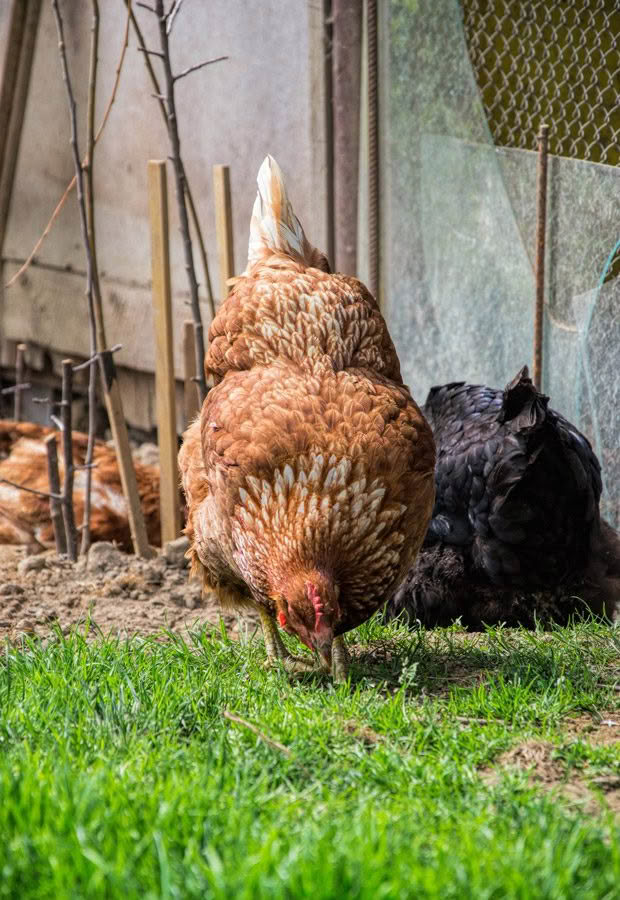
3. Use watery foods such as lettuce, fruit, and cooked rice for extra hydration.
4. If you suspect worms, drench your entire flock, not just the affected bird. You may see tapeworm segments (that look like white rice) or whole roundworms in your birds’ droppings. These are about 6cm long, look like spaghetti, and are pointed at the ends.
8 THINGS YOU NEED THINK ABOUT
1. What is the age of the bird – chick (0-6 weeks), pullet (6-18 weeks), or adult (18+ weeks)? In this case, the hen is a 2½ year old Hyline. If it were a chick, my first thought would be coccidiosis – look for signs of blood in the droppings.
In an older bird, it could be a gut bacterium such as salmonella, but the bird would also be weak, lethargic, and not eating or drinking. Another possibility is enteritis (inflammation of the gut lining), in which case vinegar in the water might help.
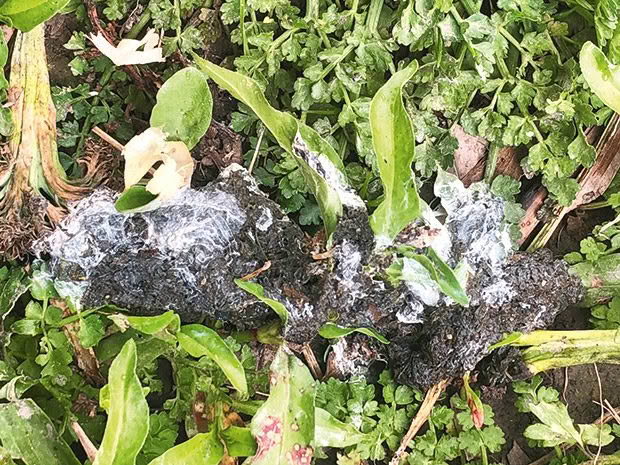
2. Has there been a recent change to the diet, such as a new feed supplier, new bag, or fresh pasture/plants?
3. Did the bird get access to something toxic, eg green potatoes, daphne, rhubarb?
4. Is more than one bird affected?
5. If the hen is laying, has she recently had a prolapse and then pecked herself, irritating the vent?
6. Has she had a respiratory disease? Symptoms of infectious bronchitis in adult poultry include watery faeces and misshapen eggs, not respiratory symptoms such as coughing.
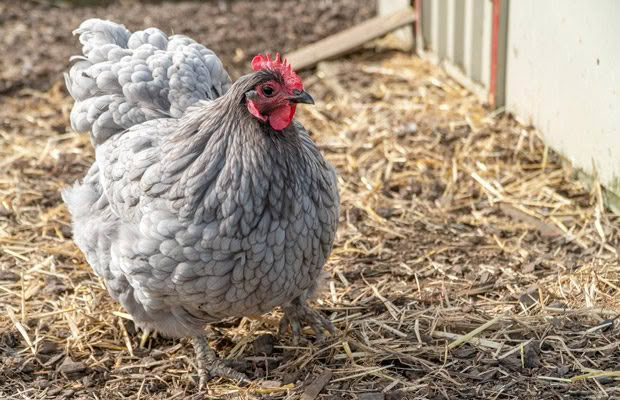
7. Are the faeces fully formed, including both the white part (urates) and the brown-yellow-green fibrous part? The faeces in this picture show both, but they’re much more runny than normal.
8. Is the bird eating, drinking, and behaving normally? If yes, it’s more likely to be something she ate passing through her system, than a disease affecting her digestive system. If symptoms persist for more than a day or two, talk to an expert.
NOT SURE WHAT THE PROBLEM IS?
If droppings change, but you can’t pinpoint a disease or dietary issue, you can try a few things.
1. Administer a bird multi-vitamin. There is a range of water-soluble vitamin and mineral supplements available from vets and specialist poultry suppliers.
2. Give electrolytes. Electrolytes help with rehydration if a bird has a digestive issue. You can buy avian electrolytes, but if you can’t find them, use one for people or other livestock. Mix up as per the instructions and use in place of water for one week. Feed should always be available.
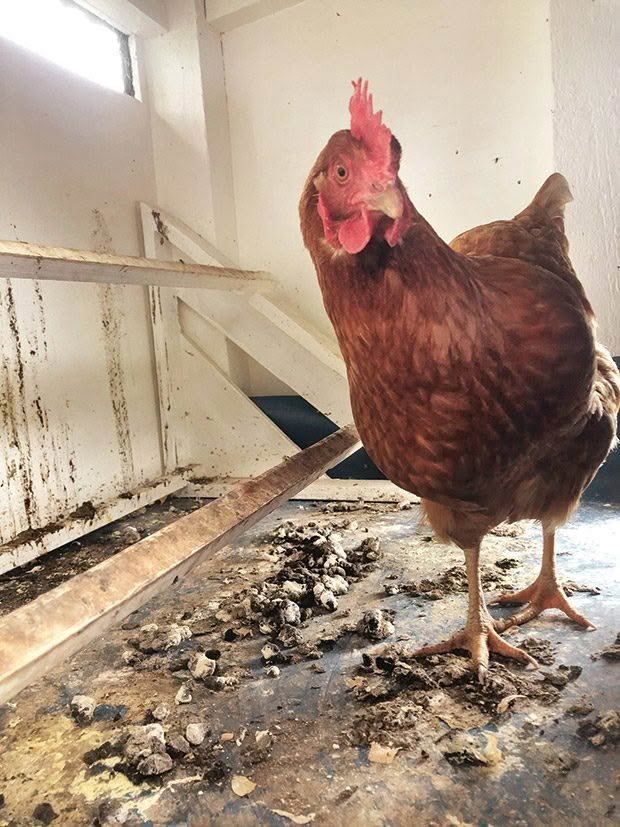
3. Try a simple stomach remedy. Cider vinegar or white vinegar in the water for 2-3 days per month (2ml of 10% vinegar per 2 litres of water) can kill off harmful (and useful) stomach bacteria. Don’t add vinegar any longer than this, as it can cause harm. Never offer undiluted vinegar (which birds may drink) as it can burn their throats and digestive tract.
4. Keep a close eye on the droppings. If you notice a change in droppings, it’s important to act quickly to find out which bird is affected. Separate it from the rest of your flock until you know what is causing the problem.
6 CAUSES OF MUCKY BUMS
Sometimes a chicken may eat something that gives it a short-term bout of loose droppings, enough to stick to the feathers. If it continues for more than a day, trim the daggy feathers to help the bird stay clean and fly-free.
If you remove or significantly shorten the feathers, any exposed skin will turn bright red. It’s a natural reaction to air and sun exposure, not sunburn, and doesn’t hurt the bird.
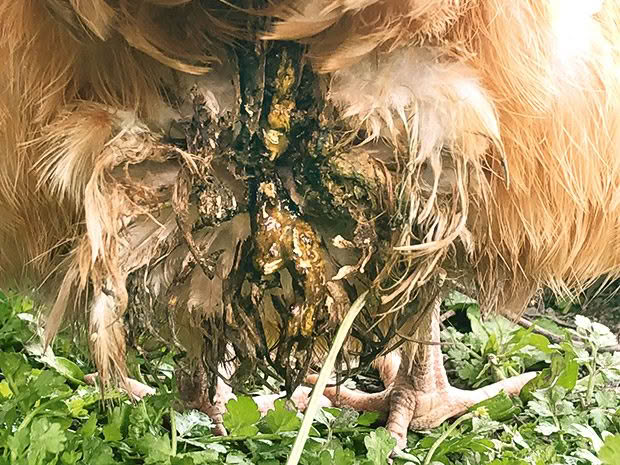
Common causes of diarrhoea include:
– a bacterial infection in the gut;
– a viral infection in the kidneys;
– irritation or infection in the oviduct;
– a sudden change in diet;
– overindulgence in a rich food source, eg ripe fruit;
– a toxin in something the bird has eaten.
When you’re trying to diagnose a health issue, it’s important to know the bird’s age, diet, environment, and any other symptoms.
WHY YOU SHOULDN’T WORM AN ADULT CHOOK WITH A DIRTY BUM
Often the first response to cases like this is to drench the bird. Many people assume the cause of diarrhoea is similar to scouring in lambs, calves, and other livestock, caused by a worm burden.
But worms rarely cause scouring in adult birds. It’s far more common to see a change in the faeces colour (pale yellow) and consistency (foamy or bubbly). Worming a sick bird can put more stress on its body.
Unless you see worms in the faeces, don’t drench as a first response to diarrhoea in an adult. Check the bird for other symptoms, take photos, and get advice from a vet or trusted poultry expert.
MORE HERE
3 ways to deal with all that chicken manure (PLUS how to make chicken poo tea for the garden)
Love this story? Subscribe now!
 This article first appeared in NZ Lifestyle Block Magazine.
This article first appeared in NZ Lifestyle Block Magazine.
